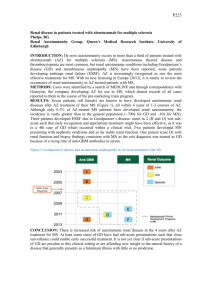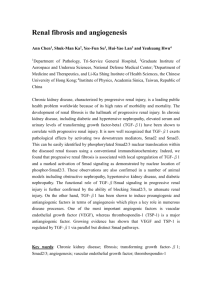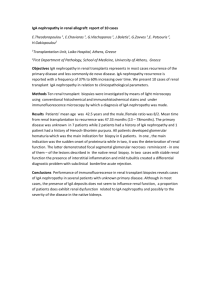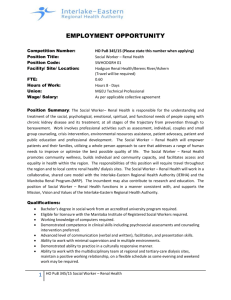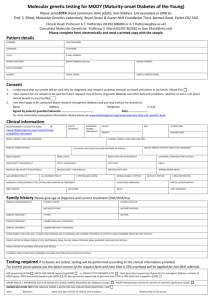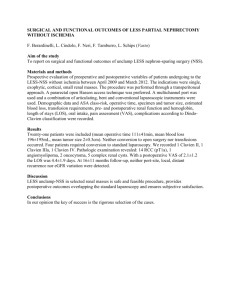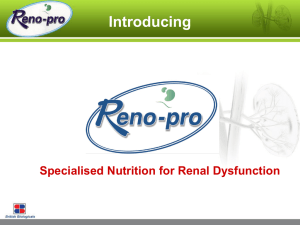An audit on Mortality and Renal Outcomes in Diabetic Nephropathy
advertisement
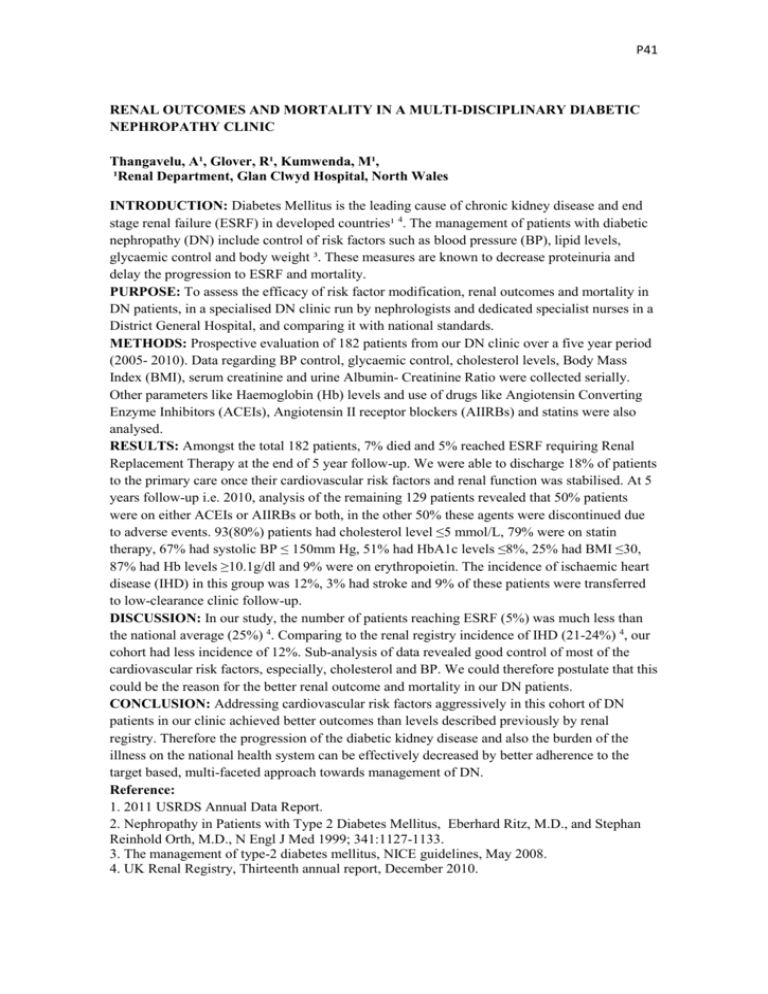
P41 RENAL OUTCOMES AND MORTALITY IN A MULTI-DISCIPLINARY DIABETIC NEPHROPATHY CLINIC Thangavelu, A¹, Glover, R¹, Kumwenda, M¹, ¹Renal Department, Glan Clwyd Hospital, North Wales INTRODUCTION: Diabetes Mellitus is the leading cause of chronic kidney disease and end stage renal failure (ESRF) in developed countries¹ 4. The management of patients with diabetic nephropathy (DN) include control of risk factors such as blood pressure (BP), lipid levels, glycaemic control and body weight ³. These measures are known to decrease proteinuria and delay the progression to ESRF and mortality. PURPOSE: To assess the efficacy of risk factor modification, renal outcomes and mortality in DN patients, in a specialised DN clinic run by nephrologists and dedicated specialist nurses in a District General Hospital, and comparing it with national standards. METHODS: Prospective evaluation of 182 patients from our DN clinic over a five year period (2005- 2010). Data regarding BP control, glycaemic control, cholesterol levels, Body Mass Index (BMI), serum creatinine and urine Albumin- Creatinine Ratio were collected serially. Other parameters like Haemoglobin (Hb) levels and use of drugs like Angiotensin Converting Enzyme Inhibitors (ACEIs), Angiotensin II receptor blockers (AIIRBs) and statins were also analysed. RESULTS: Amongst the total 182 patients, 7% died and 5% reached ESRF requiring Renal Replacement Therapy at the end of 5 year follow-up. We were able to discharge 18% of patients to the primary care once their cardiovascular risk factors and renal function was stabilised. At 5 years follow-up i.e. 2010, analysis of the remaining 129 patients revealed that 50% patients were on either ACEIs or AIIRBs or both, in the other 50% these agents were discontinued due to adverse events. 93(80%) patients had cholesterol level ≤5 mmol/L, 79% were on statin therapy, 67% had systolic BP ≤ 150mm Hg, 51% had HbA1c levels ≤8%, 25% had BMI ≤30, 87% had Hb levels ≥10.1g/dl and 9% were on erythropoietin. The incidence of ischaemic heart disease (IHD) in this group was 12%, 3% had stroke and 9% of these patients were transferred to low-clearance clinic follow-up. DISCUSSION: In our study, the number of patients reaching ESRF (5%) was much less than the national average (25%) 4. Comparing to the renal registry incidence of IHD (21-24%) 4, our cohort had less incidence of 12%. Sub-analysis of data revealed good control of most of the cardiovascular risk factors, especially, cholesterol and BP. We could therefore postulate that this could be the reason for the better renal outcome and mortality in our DN patients. CONCLUSION: Addressing cardiovascular risk factors aggressively in this cohort of DN patients in our clinic achieved better outcomes than levels described previously by renal registry. Therefore the progression of the diabetic kidney disease and also the burden of the illness on the national health system can be effectively decreased by better adherence to the target based, multi-faceted approach towards management of DN. Reference: 1. 2011 USRDS Annual Data Report. 2. Nephropathy in Patients with Type 2 Diabetes Mellitus, Eberhard Ritz, M.D., and Stephan Reinhold Orth, M.D., N Engl J Med 1999; 341:1127-1133. 3. The management of type-2 diabetes mellitus, NICE guidelines, May 2008. 4. UK Renal Registry, Thirteenth annual report, December 2010.

